Aviatik-Berg D.I (Loh. 115), Flashback, 1:48, Oblt. Frank Linke-Crawford, 27 victories, Flik 60J
Aviatik-Berg D.I (Loh. 115), Flashback, 1-48, Oblt. Frank Linke-Crawford, 27 victories, Flik 60J
Quite a demanding construction. Used Gaspatch turnbuckles and finished some small details. Unfortunately, I installed the dashboard incorrectly and figured it out too late. The rubber tires from the kit are unusable because they are too big. I cut the plastic tires from the spare wheels so that they fit exactly into the inner diameter of the discs. Used decals from the kit and it was something terrible. After soaking, they fell apart almost immediately, so I had to install them piece by piece and then painstakingly paint almost every hexagon and repair cracks. Even so, it can be seen if you look carefully, but considering that I only put in a display case for fun, it is enough for me. If someone is going to build, I recommend buying new decals or spraying over the template. The color of the Flik 60J was black, so I replaced the red one specified in the building instructions with black. The color of the letter is a bit debatable, as some sources say it's black and others say it's red. In the photos, the color of the letter seems lighter than the black stripe, so I left it red.
The Aviatik (Berg) DI, was a single-engine, single-seat biplane that was developed and manufactured by the Austro-Hungarian branch of the German airline Aviatik. It was also known as Berg DI or Berg Fighter, as it was designed by Dipl. Ing. became the chairman. Julius von Berg and distinguish it from the DI fighter built by the parent company Aviatik in Germany.
The DI was the first locally designed fighter to be accepted into the Austro-Hungarian Air Service (Luftfahrtruppen). It produced it both in-house and under license from a number of subcontractors. In 1917, the DI entered Austro-Hungarian service and saw active operations in the final years of World War I; it was commonly used for aerial reconnaissance missions, as many fighter units continued to prefer the use of German D.III Albatross to conduct air superiority operations. After the end of the conflict, it was adopted by the Hungarian Air Force, the Royal Romanian Air Force and the Royal Yugoslav Air Force.
Oberleutnant Frank Linke-Crawford (18 August 1893 – 30 July 1918) was the fourth ace of the Austro-Hungarian Air Force during World War I with 27 kills. On 30 July 1918, the day after his final victory, he flew an early model Aviatik (Berg) DI in a formation of four. He was shot down in flames by a pair of Italian Hanriot HD.1 fighters, his aircraft disintegrating before impact.
Linke-Crawford separated from his wingmen before attacking the Italians. His plane spun before colliding with them; then recovered and was shot at. His plane then disintegrated in mid-air. Linke-Crawford was accredited as Caporale Aldo Astolfi's only achievement as a fighter pilot. As the Aviatik was the first fighter aircraft to be built entirely in Austria and had an initial reputation for wing failures during violent aerial manoeuvres, it was suspected that Linke-Crawford had come into conflict with a faulty aircraft rather than an Italian pilot. While Julius von Berg's original Aviatik DI design was good, the 115 series aircraft licensed by Lohner in Vienna-Floridsdorf were notorious for failures along the trailing edges of the wing during high-speed maneuvers, as Lohner deviated from Aviatik specifications by using thinner and lighter wing fins. At the time of his death, Linke-Crawford was flying one of these non-standard machines, build number 115.32.
Although Frank Linke-Crawford was originally buried in Pobrežje Cemetery in Maribor (now Slovenia) after the war, he was reburied in Salzburg in 1919.
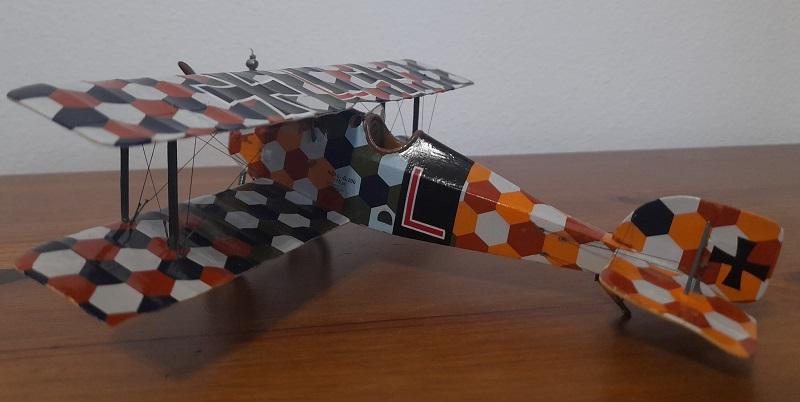
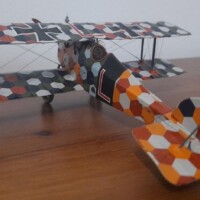
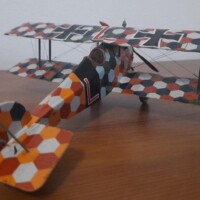

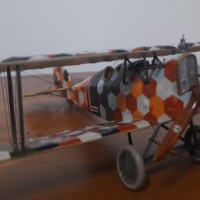
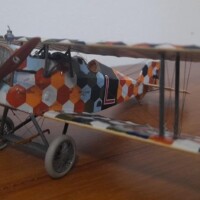
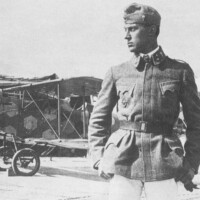
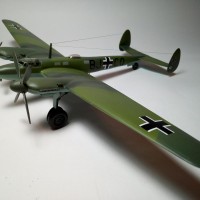
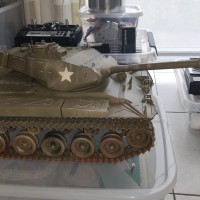

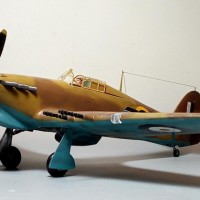
Very nice work again Milan @milantesar! 🍻 That's an unusual design, but so well done! 👏 Great article with some interesting history. 😃
Thank you Gary.
Really excellent work, Milan @milantesar
A very special camouflage scheme.
Great historical article as well, thanks for sharing.
Thank you John.
Another nice one - this one is VERY colorful!
Thank you Greg.
Excellent result on this challenging kit, Milan! Fantastic save on the decals!
Thank you Spiros.
Nice save all the way around. Wouldn't have known you had any problems had you not said so.
Thank you Tom.
The end result is very beautiful. @milantesar
Thank you John.
Great save on this beautiful aircraft. One nice thing about WW1 models it the relative freedom of color choice (within reason) since there really aren't any color pictures from back then and few pieces of genuine aircraft left. We all know how tuff it is to determine accurate colors from black and white photos. Very nicely done.
Thanks Tom, yes the choice of colors within reason doesn't really limit me.
Hard to believe this is someone’s idea of a camouflage scheme, it looks more like a colour blindness test. However, you managed to apply the troublesome transfers and nobody would never know of the problems you encountered. I’m sure it looks great in your display case. I enjoyed your write-up as well.
Thank you George.
Great result, Milan. Painting lozenge is not easy.
Thank you John.